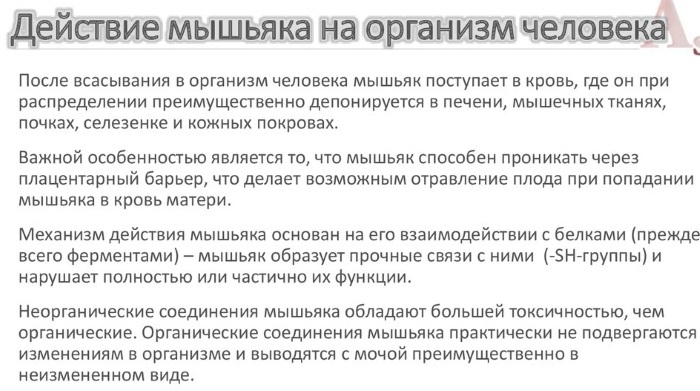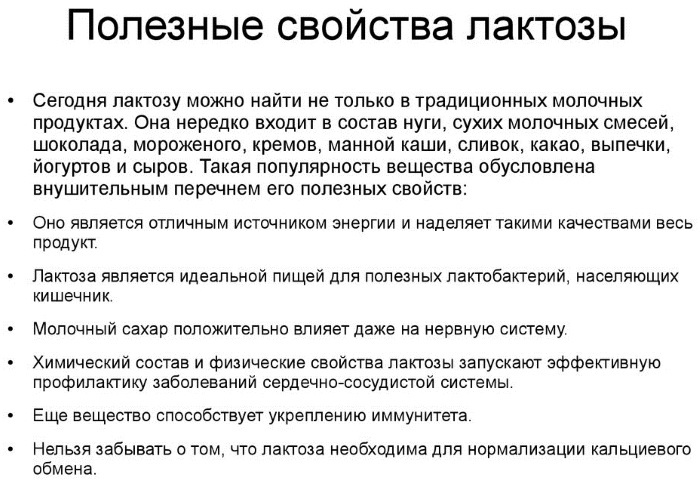The bark of the pomegranate is a rare exotic piece of fruit. Red grains eatand the hard shell is cleaned and usually discarded. However, the medicinal properties of the peel are in many ways superior to its pulp. Oriental physicians have known about this feature of the pomegranate since antiquity.
Record content:
- 1 Peculiarities
-
2 Botanical description
- 2.1 How to prepare
- 2.2 Compound
-
3 Medicinal and useful properties
- 3.1 For women
- 3.2 For men
- 3.3 For children
- 4 Potential harm
- 5 Contraindications
-
6 Traditional medicine recipes
- 6.1 Decoction for gastrointestinal disorders
- 6.2 For throat and gums
- 6.3 For wounds and burns
- 6.4 For coughs and colds
- 6.5 Tea for immunity and vigor
- 6.6 Tincture for male strength
- 6.7 Anti-inflammatory decoction
- 6.8 In cosmetology
- 7 Video about pomegranate peels
Peculiarities
The oldest mention of the pomegranate belongs to the medical treatises of Hippocrates. In the writings of the ancient Greek "father of medicine", the peel is mentioned as a remedy for stomach pains and intestinal disorders.
The pomegranate bark exhibits medicinal properties due to the high concentration of tannins and a mass of useful nutrients. Internal septa and fruit skins are still used as a home remedy for diarrhea or indigestion. Before the invention of modern anthelmintic drugs, the pomegranate integumentary shell was one of the most effective remedies for tape parasites.
Botanical description
Pomegranate has several popular names, in different parts of the world it is called "apple", using different definitions: granular, Punic, Carthaginian. In Latin, the name of the fruit Punica also refers to its Phoenician origin.
Pomegranate grows naturally in western Asia, as well as throughout the Mediterranean. The plant is especially honored in Georgia, where it is most widely used and studied.
The pomegranate tree is low, deciduous, sometimes resembling a shrub. It lends itself well to cultivation on any continent in a subtropical climate. The branches of the plant are thorny, thin. The leaves are small, oval, bright green with a glossy sheen.
The pomegranate bloom is very impressive. The plant is densely covered with bright, scarlet buds, which, after opening the petals, reach 3 cm in diameter. Pomegranate flowers are solitary, mainly concentrated at the ends of the shoots, grow from the axils of the leaves. On one plant, jug-like buds, capable of forming ovaries, and bell-shaped barren flowers coexist.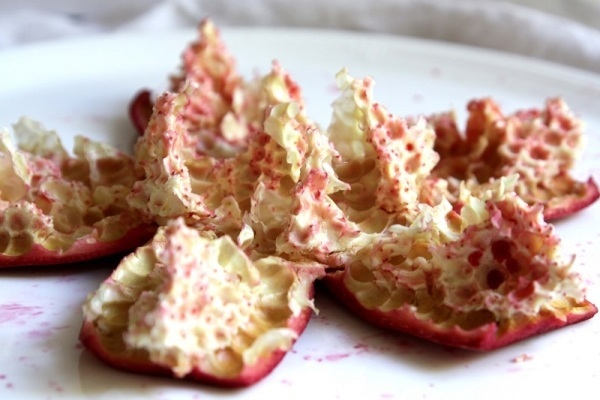
The resulting fruits are spherical and can exceed 15 cm in diameter. Numerous seeds with juicy pericarp are concentrated inside. The grains are divided into sections delimited by films.
Outside, the red seeds are covered with a dense rind. The color of the pomegranate shell varies from yellowish whitish to burgundy red. The rind tends to harden and turn brown when fully ripe.
How to prepare
The official pharmacy name of the pomegranate peel is Granati cortex. Dried can be found in the herbal departments. But it is much more convenient to procure raw materials for home medicines on your own, because pomegranate has long ceased to be exotic in stores.
Rules for harvesting pomegranate peels:
- For medicinal purposes, ripe fruits with a bright color are selected. The surface of the pomegranate should be firm and fresh in appearance. Instances with dry, pale or spotted skin are discarded.
- The fruits should be thoroughly washed and wiped dry. Then the peel is removed with a knife.
- The white subcrustal pulp, as well as the inner films, contain a lot of bitterness, if this is unacceptable, they are removed, leaving only the colored rind.
- The pomegranate shells are cut into pieces and then laid out in one layer on a wooden board or unprinted paper.
- Cover the crusts with gauze and leave in a shaded place until dry. Usually in an apartment it takes no more than 7 days.
- If the air humidity does not allow the peel to dry naturally, use an oven (at + 50 ° C).
Raw materials, ready for storage, break easily with a dry crunch. If the crust is elastic when bent, it is too early to lay it for storage.
The dried pomegranate peel is placed in a cool, dark place, packed in glass jars. At temperatures from +15 to +22 ° C, raw materials retain their medicinal properties for up to 3 years.
Compound
The pomegranate bark reveals its medicinal properties due to its rich chemical composition, which practically repeats the components of the pulp of seeds. But there are much more bitter, tannins and alkaloids in the peel, so its properties are noticeably different.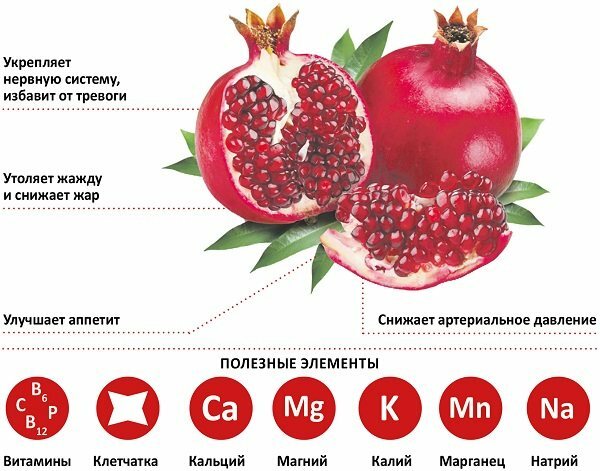
Useful substances of pomegranate peel:
| Antioxidants | They are represented by vitamins E, C and A, which are twice as many as in fruits. Substances activate metabolic processes, support the work of all organs and systems, slow down the aging process. |
| Ursolic acid | It burns fats, helps to gain muscle mass, prevents the development of atherosclerosis, is considered an anticancer agent, and normalizes cholesterol and blood sugar. |
| Tannins | Mostly catechins and tannins. They have anti-inflammatory, hemostatic, antibacterial effects. Regulate the work of the stomach, intestines, stop diarrhea. |
| Anthocyanins | Provide color to the peel, are strong antioxidants. |
| Alkaloids | They are present in a minimum concentration (about 5%), but in case of an overdose, they are toxic to the body. |
| Vitamins | In addition to those listed as antioxidants, vitamins K, B-3, B-4, B-9 and B-12 are also present. |
| Minerals | Iron, iodine, zinc, potassium and others in smaller quantities. |
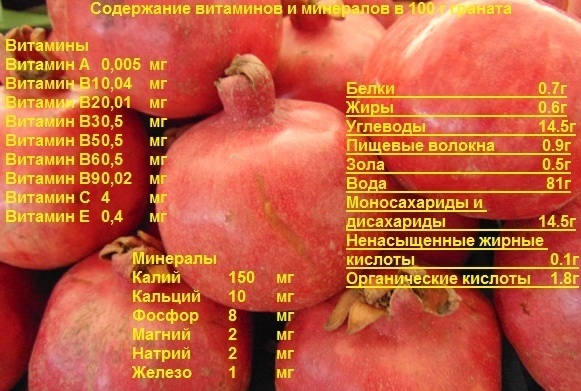
The rich mineral and vitamin composition perfectly restores the blood formula, prevents anemia. Additionally, fruit sugars, fatty and organic acids, valuable vegetable fiber were found in the pomegranate peel.
Medicinal and useful properties
The most complete study of the benefits of pomegranate peels belongs to scientists from Georgia. They use an extract from medicinal raw materials for various diseases of the gastrointestinal tract.
In addition to the astringent properties known since ancient times, the following effects of the pomegranate peel when ingested are noted:
- antiseptic;
- healing;
- bactericidal;
- pain reliever;
- anti-sclerotic;
- immunostimulating;
- antitoxic and blood-purifying;
- blood thinners, stimulating hematopoiesis.
Taking homemade drugs has proven itself in practice as a way to maintain the health of blood vessels, heart, and liver. Preventive use of pomegranate peel products prevents seasonal colds, and also reduces the likelihood of contracting viral infections.
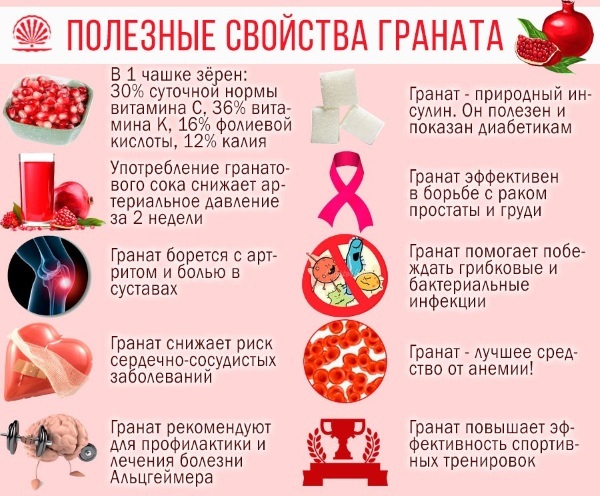
Yet the main value of the herbal medicine relates to the healing effect on the gastrointestinal tract.
Pomegranate peel preparations are prescribed for such diseases:
- enteritis;
- dysentery;
- chronic or acute colitis;
- ulcerative lesions of the mucous membranes;
- food and chemical poisoning.
Pomegranate bark combines medicinal properties with a gentle effect on the intestinal microflora. The drugs are especially appreciated in case of intolerance to medications, dysbiosis, which has arisen as a result of antibiotic treatment.
For women
The special benefits of pomegranate peel for the female body are noted with profuse and painful menstruation, with prolonged menopause.
Regular intake of decoctions or infusions gives the following effects:
- quickly restores condition after blood loss;
- eases climacteric ailments;
- normalizes the nervous system;
- strengthens blood vessels;
- reduces the amount of discharge.
However, it is recommended to take pomegranate peel preparations throughout the entire cycle, excluding the bleeding period. The blood-thinning properties of the peel are not helpful at this time.
Nutritionists recommend taking pomegranate peel tea to fill the lack of nutrients against the backdrop of strict diets. In addition to the vitaminizing effect, this drink provides bowel cleansing, neutralizes toxins.
During pregnancy, pomegranate peels are not used due to their astringent action. The gestation period is associated with a tendency to constipation and this effect of the medication can be harmful.
Pomegranate peel products are not recommended for lactating women due to the increased allergenicity of some components. In addition, according to unverified assumptions by doctors, some anthocyanins and alkaloids are able to penetrate into breast milk.
For men
Preparations from pomegranate peels are indicated for admission to men leading an active lifestyle, playing sports or physical labor. The funds strengthen the heart muscle, protect against stroke, and reduce the risk of atherosclerotic vascular changes.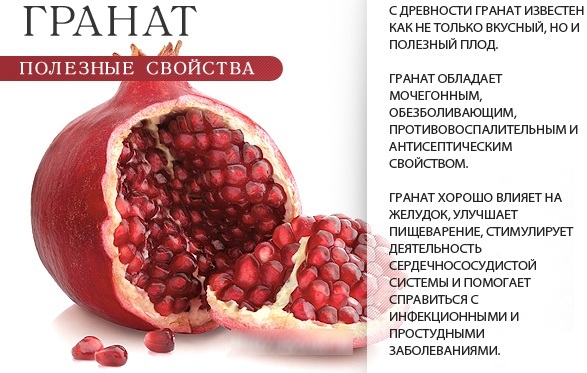
For men seeking to increase muscle mass, it is recommended to take ground pomegranate peels in powder form. 1 tbsp. l. pre-workout remedy helps to lose fat and increase muscle endurance.
Especially useful is the reception of extracts from pomegranate peels for men over 35 years old. The plant's hepatoprotective properties help maintain liver health. The general strengthening effect also extends to the reproductive system of men, reducing the risk of inflammation, maintaining normal sexual function and libido.
Pomegranate is called a natural aphrodisiac. It has been proven that taking the peel in the form of infusions, teas, tinctures or powder increases the production of testosterone in the male body.
For children
In the absence of allergic alertness, pomegranate peel preparations can be offered to children from 12 months.
Rules for treating children with pomegranate peel:
- Start taking a few drops to track possible reactions.
- Most often, it is required to take funds for diarrhea, to increase immunity, with anemia and general weakness.
- A single dosage for children does not exceed 5 ml. Reception is repeated no more than 3 times a day. This dosage is adhered to for up to 5 years. Then the amount of medicine can be gradually increased.
- A 12-year-old child with diarrhea can be given a one-time drink of 1 tbsp. l. funds. In severe condition, the reception is repeated up to 5 times.
To treat a child with home remedies from pomegranate peels, you should definitely consult a pediatrician.
Potential harm
Pomegranate bark, in addition to its health-improving effect and medicinal properties, is capable of showing harmful effects. Toxic substances in the composition, with excessive use, provoke poisoning.
Signs of pomegranate peel alkaloids poisoning:
- headache;
- nausea, vomiting;
- dizziness, loss of orientation;
- general weakness and drowsiness, or vice versa nervous excitement.
When symptoms appear, treatment is urgently stopped. Take a mild laxative or any sorbents. In severe cases, convulsions and loss of consciousness are observed. This condition requires the intervention of a doctor.
Contraindications
Pomegranate peels have several strict contraindications.
The peel of an exotic fruit is prohibited in the following conditions:
- Individual intolerance to pomegranates.
- An allergic reaction to red berries or fruits.
- Bleeding predisposition and decreased blood coagulation.
- A tendency to constipation, hemorrhoids, trauma or swelling of the rectum.
- Hepatitis or cirrhosis in a serious stage.
- Impaired renal function.
Reception of pomegranate peel is prohibited to combine with anticoagulants and antihistamines. Due to the strong composition, inclusion in any treatment regimen should be done with the knowledge of the attending physician.
Traditional medicine recipes
Traditional medicine knows many ways to harness the healing power of the pomegranate peel. For treatment, ground powder, decoctions, infusions, alcoholic tinctures, teas are used. Different methods of preparation provide drugs with different effects.
Decoction for gastrointestinal disorders
With diarrhea, pomegranate peel helps at any age. The broth is prepared in the same way for children and adults. Only the dosage and frequency of administration differ.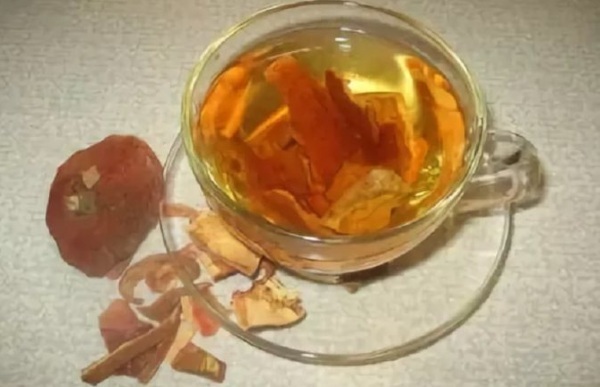
Preparation of funds:
- Measure 1 tbsp. l. dried pomegranate peel.
- Pour the crushed raw materials 200 ml of cold water.
- Bring the mixture to a boil and immediately remove from heat.
- Insist under the lid for 45 minutes.
The product is best taken warm. Adults and adolescents over 12 years old are prescribed 50 ml of the drug three times a day. For children under 5 years of age, the dosage is 1 tsp. l. three times a day. In case of especially severe poisoning, therapy is carried out for 3 days. Usually, a few doses are enough to stop diarrhea.
A remedy made from pomegranate peels not only stops diarrhea, but also normalizes the functioning of the entire gastrointestinal tract, destroys harmful bacteria, and helps get rid of toxins.
For throat and gums
For infectious and inflammatory diseases of the upper respiratory tract, as well as for bleeding gums, stomatitis, gingivitis, a decoction of pomegranate peels is used in the form of rinsing.
Preparation:
- Dry pomegranate peel is crushed. Then 2 tbsp is measured. l. raw materials.
- Pour the peel into a cooking utensil and pour 300 ml of cold water.
- Bring the mixture to a boil with minimal heat.
- Cook for another 5 minutes, then insist under the lid for about an hour.
With a filtered agent, gargle with sore throat or colds up to 5 times a day. Treatment is continued until complete recovery. The same course is used to treat gums or heal wounds, abscesses on the mucous membranes of the mouth.
For wounds and burns
A large amount of ascorbic acid and tannins allows skin lesions to heal quickly. Pomegranate peels quickly stop blood from cuts, disinfect and heal wounds with virtually no scars.
For the treatment of wound surfaces, abrasions and burns, a powder from a dried peel is used. To teach the finest fraction, pomegranate peels are ground in a coffee grinder. The treatment is carried out until complete healing.
For coughs and colds
Pomegranate peels in the form of infusion have an expectorant effect and help to heal even an old cough. At the same time, the infection in the ENT organs is destroyed, and the immune system is assisted in the fight against the disease.
Preparation of infusion:
- A tablespoon of chopped peel is poured with 200 ml of boiling water.
- The dishes are tightly covered and wrapped warmly.
- Insist on the remedy for 30 minutes.
- Strain and drink warm, heating the composition if necessary.
The number of tools intended for a day of treatment. The infusion of pomegranate peels is drunk at one time or divided into several portions. It is allowed to add a little honey to the composition. If you have a painful cough, you should not do this treatment before bedtime.
Tea for immunity and vigor
Pomegranate bark shows medicinal properties even in the form of tea. Hot drinks can be used as dried and fresh peel, removing from them the white film.
To brew pomegranate tea, it is enough to break the dry peel with your hands; it is not necessary to grind the raw materials into powder. Fresh crust can be cut into small strips.
Brew tea as usual, using about 1 tsp. l. raw materials for 1 cup. Regularly drinking several servings of this drink a day, you can defeat anxiety, stress, depressive mood. A cup of tea with pomegranate peels drunk before bed will help with insomnia.
The tea on the peel of the pomegranate turns out to be very aromatic, but the taste of the drink has a noticeable astringency. Therefore, such raw materials are combined with other herbal remedies, lemon, honey.
Tincture for male strength
Valuable substances from the pomegranate peel dissolve well in alcohol and are ways to maintain beneficial properties for a long time. Therefore, the most popular home remedy is tincture.
You can prepare the product using medical alcohol, store-bought vodka or brandy. If homemade moonshine is used, it must be very high purity.
Tincture preparation:
- For alcohol extracts, fresh pomegranate peel is used. The tincture is suitable for a bright, elastic peel, without an inner white layer.
- Measure the amount of peel and alcohol based on a ratio of 1:10. Usually, 2 parts of sugar are added to the composition to improve the taste.
- The peel is peeled from the films, and then cut into small squares. The raw materials are placed in a glass bottle.
- Sprinkle sugar into the container and add vodka or alcohol.
- Seal the bottle and shake vigorously until the grains dissolve.
- Insist the medicine in a dark place for at least 40 days.
The remedy is taken for age-related or hormonal problems with potency, inflammation of the prostate, as well as for raising the tone. The daily norm of a pomegranate drink per day is 50 ml.
Anti-inflammatory decoction
The anti-inflammatory properties of pomegranate peel are used for diseases of the kidneys, urinary tract, reproductive system, and gastrointestinal tract. The same recipe is used for scarring stomach ulcers and gastritis.
Preparation:
- The peel of one large pomegranate is finely chopped, poured into a small saucepan.
- Pour boiling water (300 ml) and place the dishes in a water bath.
- Warm up the product for about 1 hour under the lid.
- The learned broth is drained.
They drink 50 ml of anti-inflammatory broth 20 minutes before meals twice a day. Treatment is carried out until a lasting effect, but not longer than 20 days in a row.
In cosmetology
Pomegranate peel in various forms is used to enrich ready-made cosmetics:
- Finely ground pomegranate peels are added to ready-made creams and masks to enhance anti-aging properties. The powder, diluted with warm water, is applied as a mask to smooth deep wrinkles.
- Rinse the hair with a decoction of pomegranate peel after washing to give it strength and shine. This makes the shade darker. This conditioner accelerates growth, eliminates brittle hair.
- A vodka tincture diluted in half is used to rub it into the hair roots for dandruff and excessive greasiness. At the same time, alcoholic extracts are diluted more.
Scrubs and applications with pomegranate peel powder can help relieve acne, pimples and clogged glands.
The pomegranate bark is not inferior to the fruit in its medicinal properties, and has a unique effect in case of gastrointestinal diseases. Its use in home recipes is time-tested, and its use in standard dosages does not cause side effects.
Video about pomegranate peels
Pomegranate peel is a powerful antioxidant:


